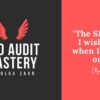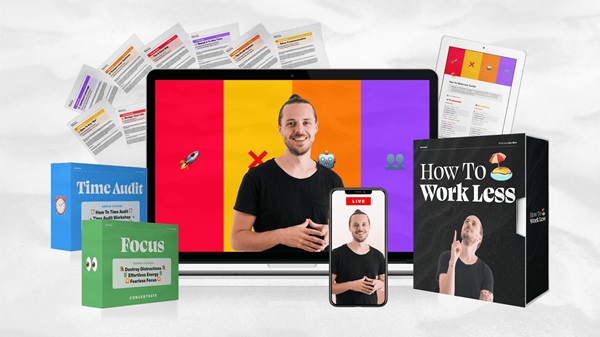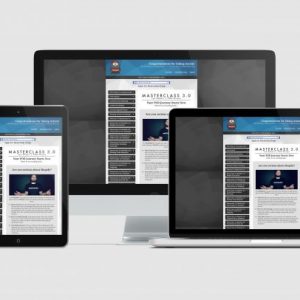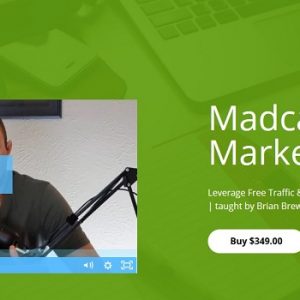No products in the cart.
How To Work Less – Rich Webster
$995.00 $32.00
- Payment method: I will send the payment link to your email.
- Deliver by: Google Drive, Mega.nz
Category: Marketing
The dream of self-employment often clashes with the reality of endless to-do lists and burnout. But what if you could reclaim your time and boost your profits without sacrificing your well-being? That’s the promise of How To Work Less, and this article delves deep into Rich Webster’s approach to achieving it.
Table of Contents
How To Work Less
The allure of self-employment often stems from the promise of freedom – the ability to set your own hours, choose your projects, and dictate your own destiny. However, for many solopreneurs, freelancers, and service providers, this dream quickly morphs into a relentless cycle of long hours, overflowing inboxes, and constant stress. The reality is often far removed from the idyllic vision of a balanced lifestyle. This is where the concept of How To Work Less becomes not just appealing, but essential. It’s about strategically redesigning your business to prioritize efficiency, profitability, and ultimately, your personal well-being. It’s not about laziness or shirking responsibility, but rather about smart work – implementing systems and strategies that allow you to achieve more in less time.
The goal is to transform your business from a demanding overlord into a supportive vehicle that fuels your desired lifestyle. For those trapped in the “Chief Everything Officer” role, juggling countless tasks and feeling perpetually overwhelmed, the idea of working less can seem like a distant fantasy. However, it’s a tangible goal achievable through deliberate action and a willingness to challenge conventional notions of entrepreneurial success. The course is fundamentally designed to help self-employed individuals transition from being trapped in their business to owning a profitable lifestyle business that prioritizes profit and free time over vanity metrics.
Reclaiming Your Time: The Core Principles
The journey to working less begins with a fundamental shift in mindset. It’s about recognizing that your time is your most valuable asset and learning to protect it fiercely. This involves understanding the difference between being busy and being productive. Many entrepreneurs fall into the trap of believing that long hours equate to success, but often, these hours are filled with unproductive tasks and distractions. Prioritization is key. Identifying the activities that generate the most significant results and focusing your energy on those is crucial.
This often means saying “no” to opportunities that don’t align with your goals or don’t provide a sufficient return on investment. It also involves being ruthless in eliminating time-wasting activities, such as unnecessary meetings, excessive social media browsing, and constant email checking. Furthermore, reclaiming your time requires a proactive approach to managing your schedule and setting clear boundaries. This means establishing defined work hours and sticking to them, communicating your availability to clients and colleagues, and creating a dedicated workspace free from distractions. By consciously controlling your time, you can begin to break free from the reactive mode that characterizes so many self-employed individuals
From “Bad Job” to “Dream Business”
The transformation from a demanding “bad job” to a fulfilling “dream business” is at the heart of the How To Work Less philosophy. This isn’t just about reducing your working hours; it’s about fundamentally reshaping your business to align with your values and aspirations. This process starts with a clear vision of what your ideal business and life look like. What are your financial goals? How much time do you want to spend working? What activities do you enjoy, and which do you dread? The answers to these questions will serve as your guiding principles as you redesign your business. A key element of this transformation is identifying and delegating tasks that you dislike or that don’t utilize your unique skills.
This may involve hiring virtual assistants, outsourcing specific projects, or automating repetitive processes. By offloading these tasks, you free up your time and energy to focus on the activities that you excel at and that contribute the most to your business’s success. Another crucial aspect is building a team of trusted professionals who can support your vision and contribute to your growth. This team may include freelancers, contractors, or even part-time employees. The key is to assemble a group of individuals who possess complementary skills and who share your commitment to quality and efficiency.
The 4-Step Work Less System: A Blueprint for Freedom
Rich Webster’s How To Work Less System provides a structured framework for transforming your business and reclaiming your time. This 4-step process is designed to help solopreneurs identify their priorities, eliminate inefficiencies, automate repetitive tasks, and delegate responsibilities effectively. The first step, INITIATE (Productivity), focuses on gaining clarity on your goals and priorities. This involves defining what you truly want from your business and life, and identifying the activities that will help you achieve those goals. The Work Less Formula, Right Thing Framework, 5 Hour Day steps, and the 80/20 Principle are also integrated in order to achieve your objectives.
The second step, ELIMINATE (Boundaries), is about removing the things you hate doing, such as dealing with bad clients, stressful projects, and administrative tasks by implementing strategies on how to say “no” with zero guilt and setting boundaries with your clients. The third step, AUTOMATE (Systems), involves designing systems that run your business for you, such as creating Solopreneur Systems, optimizing the Profit System, and calculating EHR (Effective Hourly Rate). The fourth step, DELEGATE (Leverage), is about leveraging your time by delegating tasks to others. This includes strategies on spending money to buy back time and hiring and managing freelancers. By following this 4-step system, solopreneurs can create a business that is both profitable and fulfilling, allowing them to work less and live more.
Rich Webster
Rich Webster isn’t just a business coach; he’s a seasoned entrepreneur who has walked the path that many solopreneurs aspire to tread. His story is one of personal transformation, from a workaholic designer trapped in a cycle of long hours and limited income to a successful owner of multiple businesses, working less than 20 hours a week. He is running TWO multi-six figure businesses in less than 20 hours a week. His design agency brought in over half a million dollars, while working just 10-15 hours a week. This personal journey forms the foundation of his credibility and makes him a relatable and inspiring figure for those seeking to break free from the tyranny of relentless work.
Webster’s approach isn’t based on abstract theories or generic advice; it’s rooted in his own experiences and the practical strategies he developed to overcome his own challenges. He understands the unique struggles faced by solopreneurs, the constant pressure to wear multiple hats, the difficulty of prioritizing tasks, and the feeling of being perpetually overwhelmed. His course, How To Work Less, isn’t just a collection of productivity tips; it’s a comprehensive system designed to address the root causes of overwork and inefficiency. It’s a blueprint for redesigning your business to align with your values, your goals, and your desired lifestyle.
From Burnout to Breakthrough: Rich Webster’s Origin Story
Rich Webster’s journey to becoming a proponent of working less began with a harsh dose of reality. As a designer and agency owner, he initially embraced the traditional entrepreneurial narrative of hard work and long hours, believing that success required relentless dedication and sacrifice. He traded in 40 hours a week for working 24/7. This approach quickly led to burnout, exhaustion, and a growing disconnect between his work and his personal life. Despite his efforts, he found himself working 70-hour weeks and still struggling to make ends meet.
This realization forced him to question his assumptions and seek a different path. He began experimenting with different strategies, focusing on efficiency, automation, and delegation. He challenged the conventional wisdom that equated long hours with success and discovered that it was possible to achieve more by working smarter, not harder. This transformation wasn’t easy; it required a willingness to step outside his comfort zone and challenge his own beliefs. But the results were undeniable. Webster was able to reclaim his time, boost his profits, and create a business that supported his desired lifestyle. His wife was able to quit her 9-5 job and start her own business.
Building Credibility Through Results: The Proof is in the Pudding
Rich Webster’s credibility as a business coach isn’t based solely on his personal story; it’s also grounded in the tangible results he’s achieved in his own businesses. He asserts that he used the exact same systems, templates, frameworks, and concepts you’ll learn in this course to achieve these results, building credibility for his teaching methodology. Running TWO multi-six figure businesses in less than 20 hours a week. His design agency brought in over half a million dollars, while working just 10-15 hours a week. These achievements demonstrate that his approach to business is not only effective but also scalable.
He’s not just teaching theory; he’s sharing proven strategies that he has personally implemented to achieve significant success. This level of demonstrable expertise is rare in the business coaching industry. Many coaches lack the real-world experience to back up their advice, while others focus on generic strategies that may not be applicable to specific situations. Webster’s approach, on the other hand, is grounded in practical experience and tailored to the unique challenges faced by solopreneurs. He provides concrete tools, templates, and frameworks that students can immediately implement in their own businesses.
Beyond the Hours: The Essence of True Freedom
Rich Webster’s ultimate goal isn’t just to help you work less; it’s to empower you to achieve true freedom in your business and life. He describes achieving true freedom where he work[s] when I want to work, and stop when I want to stop. His business works when I’m not working. This means creating a business that supports your desired lifestyle, allowing you to pursue your passions, spend time with loved ones, and travel the world without feeling chained to your desk. It’s about designing a business that aligns with your values and allows you to live a life of purpose and fulfillment. This vision of freedom goes beyond simply reducing your working hours; it’s about creating a business that is sustainable, scalable, and aligned with your personal goals. It’s about building a business that serves you, rather than the other way around. Webster encourages his students to define their own definition of freedom and to use that definition as their guiding principle as they redesign their businesses. He emphasizes that there is no one-size-fits-all approach to success and that the key is to find a balance between work and life that aligns with your individual needs and aspirations. By focusing on freedom as the ultimate goal, Webster helps his students create businesses that are not only profitable but also deeply fulfilling.
Conclusion
In essence, How To Work Less with Rich Webster is more than a business course; it’s a transformative journey towards reclaiming your time, boosting your profits, and achieving the elusive dream of a truly balanced and fulfilling entrepreneurial life by creating a business that is both profitable and personally rewarding.
Sales Page:_https://learn.howtoworkless.com/
Be the first to review “How To Work Less – Rich Webster” Cancel reply
Related products
$20.99
Sale!
Marketing
$85.00
$49.00
$19.00
Sale!












Reviews
There are no reviews yet.